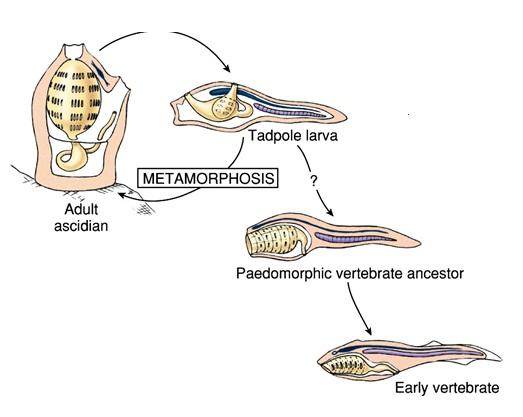What is difference between metamorphosis and retrogressive metamorphosis?
1 Answer
Metamorphosis literally means change in form. In retrogressive metamorphosis, advanced characters of an early form are lost in the adult.
Explanation:
In biology, metamorphosis refers to transformation: a change in appearance, structure and function. This could be transformation of an individual animal through different stages of development i.e. from hatching to maturity. Even formation of a motile sperm from spermatid is also a kind of metamorphosis.
Metamorphosis is common in life cycle of insects and amphibians. The change in form is often associated with a change in habit and habitat. For example, larvae (=naiad) of dragon fly and may fly are aquatic and gill breathing while the flies are air breathing and air borne.
 )
)
Retrogressive metamorphosis is an attribute of urochordata where an aquatic, free swimming larva with notochord changes into a sessile, nonchordate adult. This kind of metamorphosis includes total loss of advanced characters present in larval stage.
Some urochordates have escaped this route to retrograde form through neoteny i.e. their larvae do not show any changes associated with metamorphosis and subsequently there is paedogenesis i.e. sexual reproduction achieved by mature larval form.
Relatives of such urochordates are considered to be ancestors of other chordates.

